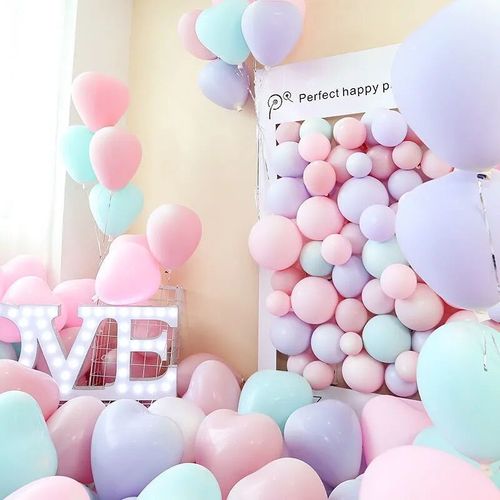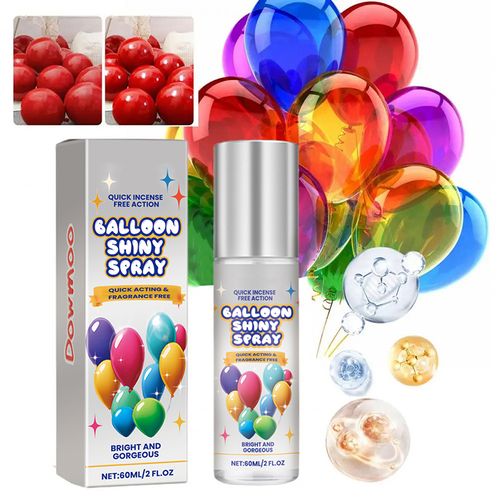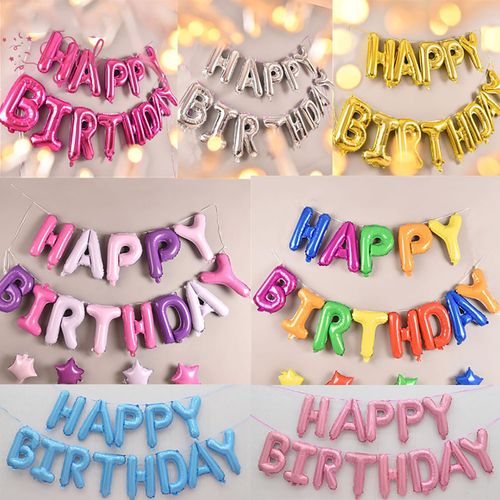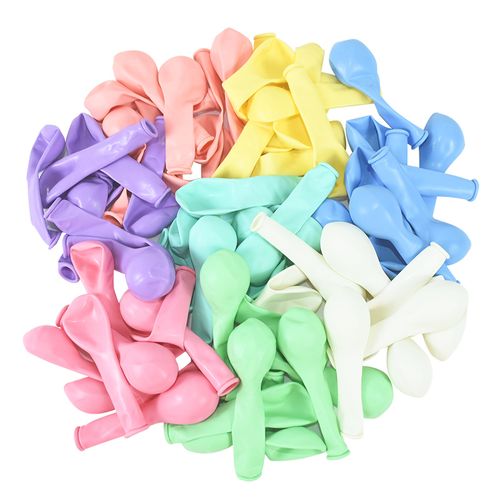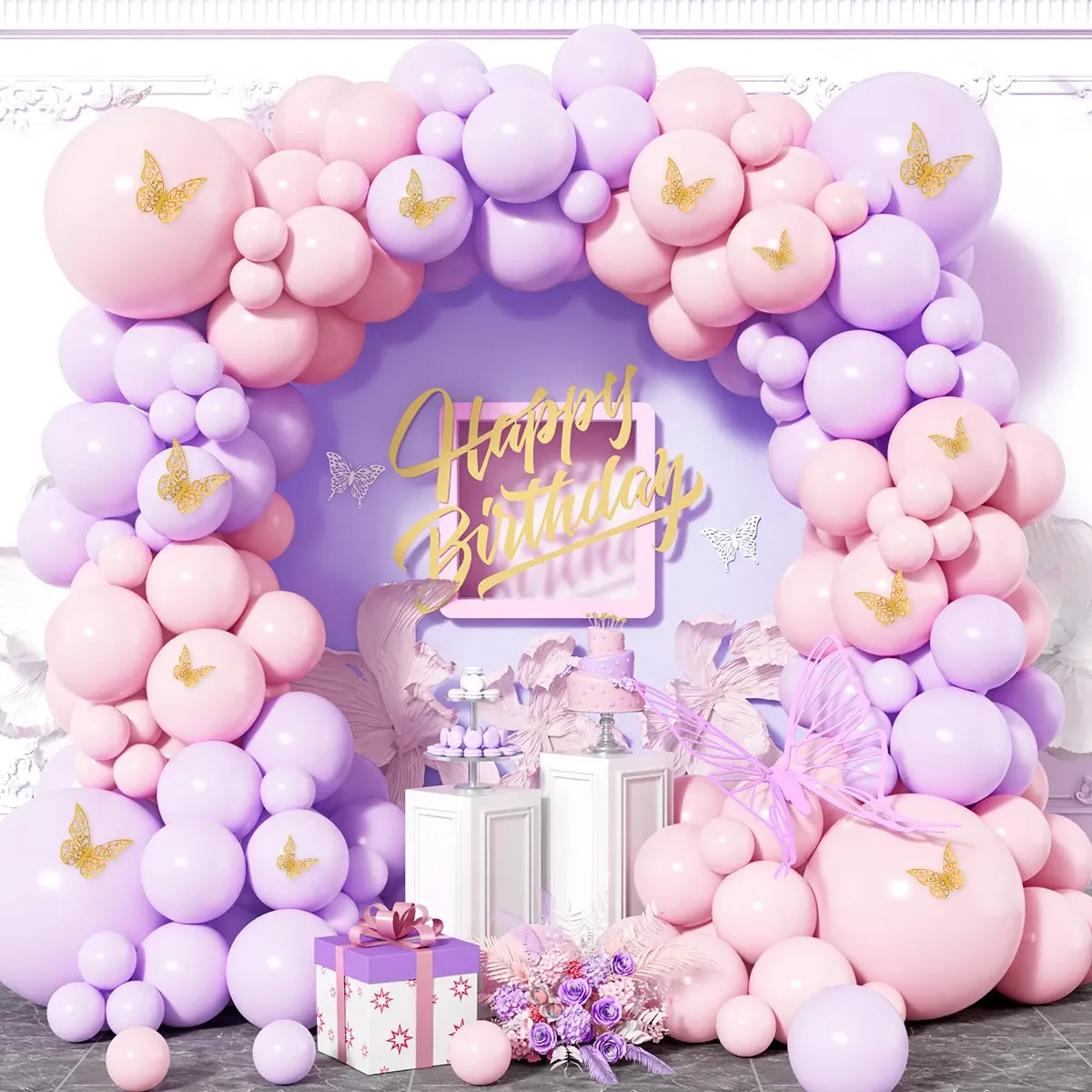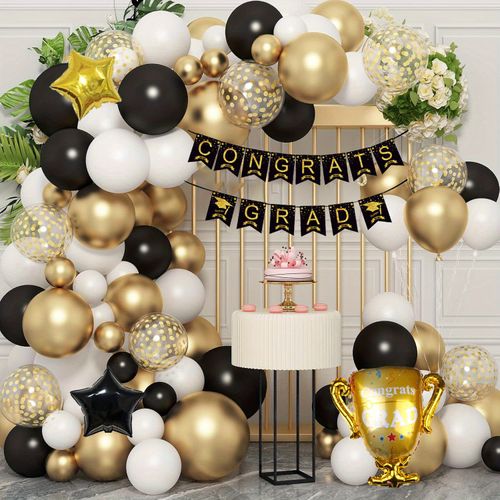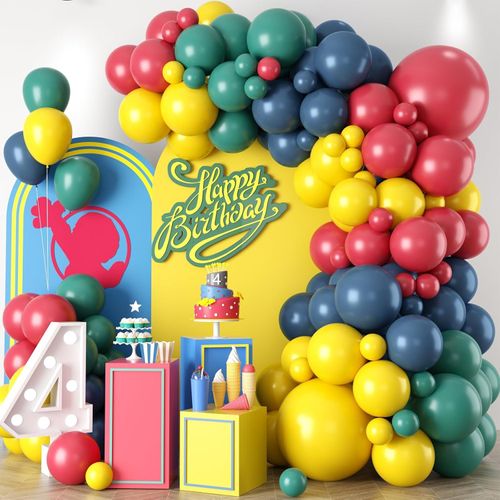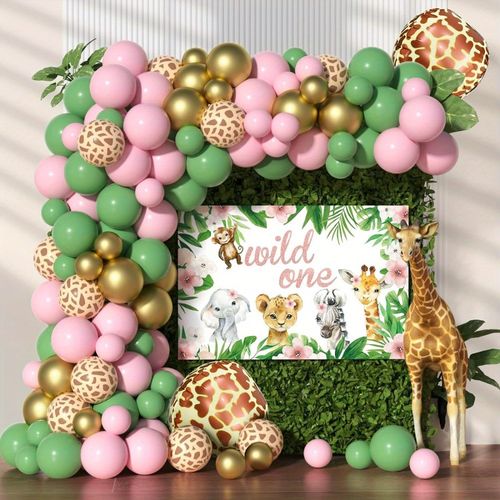Foil Balloons vs Latex Balloons: The Ultimate Comparison Guide
When planning a celebration or event, choosing the right type of balloons can significantly impact both the aesthetic appeal and practical aspects of your decorations. The two primary contenders in the balloon world—foil balloons and latex balloons—each offer distinct advantages and limitations. This comprehensive comparison guide will help you understand the differences between these popular options, enabling you to make informed decisions for your next event.
Understanding Foil Balloons
Foil balloons, also known as mylar balloons, are made from metallized nylon or polyester films that create a shiny, reflective surface. First introduced in the 1970s, these balloons have revolutionized the decoration industry with their durability and versatility.
Composition and Manufacturing
Foil balloons are created by bonding two sheets of metallized nylon or polyester film together using heat sealing techniques. This process creates an airtight chamber that can be filled with helium or air. The metallic coating gives these balloons their characteristic shine and reflective properties.
The manufacturing process allows for precise shapes and designs, enabling manufacturers to create everything from standard round shapes to complex character designs and custom forms. The material is non-porous, which contributes to several of its key characteristics.
Key Characteristics of Foil Balloons
Extended Float Time
One of the most significant advantages of foil balloons is their impressive helium retention:
- Average Float Duration: 3-14 days (depending on size and quality)
- Large Foil Balloons (36"+): Can float for 2-4 weeks
- Self-Sealing Valves: Many foil balloons feature valves that help prevent helium leakage
This extended float time makes foil balloons ideal for events that span multiple days or when decorations need to be set up well in advance.
Design Versatility
Foil balloons offer unparalleled design options:
- Printed Designs: The smooth surface allows for detailed printing of images, characters, and messages
- Shape Variety: Available in countless shapes beyond simple spheres (stars, hearts, numbers, letters, character designs)
- Double-Sided Printing: Different designs can appear on each side of the balloon
- Specialized Finishes: Holographic effects, color-shifting properties, and textured surfaces
Durability
Foil balloons are significantly more resistant to damage than their latex counterparts:
- Puncture Resistance: Less likely to pop from casual contact with sharp objects
- Environmental Stability: Less affected by temperature and humidity fluctuations
- Structural Integrity: Maintain their shape without becoming misshapen over time
- Refillable: Can be deflated and reinflated for future use
Limitations of Foil Balloons
Despite their many advantages, foil balloons do have several drawbacks:
Environmental Concerns
Foil balloons pose significant environmental challenges:
- Non-Biodegradable: The metallized plastic does not break down naturally in the environment
- Wildlife Hazard: Can cause harm to animals if ingested or entangled
- Electrical Hazard: Conduct electricity and can cause power outages if released outdoors
- Long-term Waste: Remain in landfills indefinitely
Cost Considerations
Foil balloons typically represent a higher investment:
- Higher Unit Price: Generally cost 3-5 times more than standard latex balloons
- Specialized Shapes: Custom or character designs command premium prices
- Inflation Costs: May require special equipment or professional inflation services
Aesthetic Limitations
While versatile in many ways, foil balloons have certain aesthetic constraints:
- Less "Soft" Appearance: The metallic surface creates a more defined, less organic look
- Limited Transparency Options: Cannot achieve the translucent effect possible with latex
- Restricted Expansion: Cannot be under or over-inflated to achieve different sizes or shapes
- Visible Seams: Heat-sealed edges are visible in the design
Understanding Latex Balloons
Latex balloons are made from the sap of rubber trees (primarily Hevea brasiliensis), which is harvested and processed into a flexible, stretchable material. These traditional balloons have been a celebration staple for generations.
Composition and Manufacturing
Natural latex is harvested through a process called "tapping," where the tree's bark is cut, allowing the milky sap to flow out. This sap is then collected, processed, and formed into balloons through a dipping method where balloon molds are immersed in liquid latex. After drying and curing, the result is the stretchy, flexible balloon we're familiar with.
It's worth noting that some "latex" balloons on the market today may contain synthetic materials or additives that affect their properties and environmental impact.
Key Characteristics of Latex Balloons
Versatility and Flexibility
Latex balloons offer unique physical properties:
- Stretchability: Can expand to many times their deflated size
- Variable Inflation: Can be under or over-inflated to achieve different sizes and shapes
- Moldability: Can be twisted, tied, and manipulated into various forms
- Organic Appearance: Create a softer, more natural aesthetic
Color and Finish Options
Latex balloons come in an impressive array of visual options:
- Extensive Color Range: Available in virtually every color imaginable
- Finish Varieties: Standard, metallic, pearl, pastel, neon, and confetti-filled options
- Transparency Levels: From opaque to semi-transparent depending on color and thickness
- Custom Color Matching: Professional suppliers can match specific brand colors or wedding palettes
Cost-Effectiveness
For budget-conscious events, latex balloons offer significant advantages:
- Lower Unit Cost: Typically much less expensive than foil alternatives
- Bulk Purchasing: Substantial discounts available for large quantities
- DIY Friendly: Easily inflated with inexpensive hand pumps or rental helium tanks
Limitations of Latex Balloons
Latex balloons come with several significant drawbacks that should be considered:
Limited Float Time
Perhaps the biggest limitation of latex balloons is their relatively short lifespan:
- Average Helium Float Duration: 8-12 hours for standard 11" balloons
- Environmental Factors: Heat, sunlight, and dry air significantly reduce float time
- Size Impact: Larger balloons (16"+) may float slightly longer but are more expensive
- Hi-Float Treatment: Special gel treatments can extend float time to 1-3 days but add cost and preparation time
Durability Issues
Latex balloons are more fragile than their foil counterparts:
- Popping Risk: More susceptible to punctures from sharp objects, static electricity, or over-inflation
- Environmental Sensitivity: Extreme temperatures can cause premature deflation or popping
- Oxidation: Exposure to air causes latex to break down and become brittle
- UV Degradation: Sunlight accelerates deterioration
Allergy Concerns
An important consideration for public events:
- Latex Allergies: Affect approximately 1-6% of the general population
- Severity Range: Reactions can vary from mild skin irritation to potentially life-threatening anaphylaxis
- Healthcare Settings: Many hospitals and medical facilities ban latex balloons entirely
- Increasing Restrictions: Some schools and public venues have implemented latex-free policies
Direct Comparison: Foil vs. Latex Balloons
Longevity and Float Time
Foil Balloons:
- Float for 3-14 days with helium
- Maintain shape and appearance throughout float period
- Can be refilled if partially deflated
- Less affected by environmental conditions
Latex Balloons:
- Float for 8-12 hours with helium (untreated)
- Gradually shrink and lose optimal appearance over time
- Cannot be refilled once deflated
- Highly sensitive to temperature, humidity, and sunlight
Best For: Choose foil for extended events or when decorations must be set up well in advance. Choose latex for single-day events where decorations will be installed shortly before guests arrive.
Visual Impact and Aesthetics
Foil Balloons:
- Shiny, reflective surface
- Precise shapes and detailed printed designs
- Structured, defined appearance
- Limited to predetermined shapes and sizes
Latex Balloons:
- Soft, matte or pearl finish (depending on type)
- Organic, rounded forms
- Versatile sizing through different inflation levels
- Can be manipulated into various shapes through twisting and tying
Best For: Choose foil for character designs, specific shapes, or when precise messaging is needed. Choose latex for organic-looking installations, balloon sculptures, or when a softer aesthetic is desired.
Environmental Considerations
Foil Balloons:
- Non-biodegradable
- Can be reused if properly stored
- Conduct electricity (hazardous if released outdoors)
- Remain intact in the environment for years
Latex Balloons:
- Biodegradable, though decomposition takes 6 months to 4 years
- Single-use in most applications
- Do not conduct electricity
- Fragment into smaller pieces as they degrade
Best For: Neither option is truly environmentally friendly, but latex has a slight edge due to eventual biodegradability. For eco-conscious events, consider air-filled options that can be properly disposed of afterward rather than released.
Cost Analysis
Foil Balloons:
- Higher unit cost ($2-$15+ depending on size and design)
- Longer lifespan may justify higher initial investment
- Potential for reuse in some applications
- Often require professional inflation for best results
Latex Balloons:
- Lower unit cost ($0.25-$3 depending on size and quality)
- May require larger quantities due to shorter lifespan
- Additional costs for treatments like Hi-Float if extended float time is needed
- Easily inflated with inexpensive equipment
Best For: Choose latex for large-scale decorations on a limited budget. Choose foil for featured pieces where quality and longevity justify the higher cost.
Practical Applications
Foil Balloons:
- Centerpiece and focal point designs
- Photo booth backdrops
- Personalized messages and numbers
- Long-running events or displays
- Outdoor events (with proper anchoring)
Latex Balloons:
- Balloon arches and garlands
- Large-scale ceiling installations
- Balloon drops and releases (where permitted)
- Balloon twisting and sculpture
- Quick setups and single-day events
Best Uses for Foil Balloons
Milestone Celebrations
Foil balloons excel at highlighting significant numbers and achievements:
- Birthday Milestones: Age numbers for landmark birthdays
- Anniversaries: Year numbers and commemorative designs
- Graduations: Year digits and congratulatory messages
- Baby Celebrations: Gender reveal announcements and birth statistics
Themed Character Events
The detailed printing capabilities make foil balloons perfect for character-themed parties:
- Children's Birthday Parties: Licensed character designs
- Movie Release Celebrations: Film-themed balloons
- Sporting Events: Team logos and mascots
- Holiday Characters: Seasonal designs for various celebrations
Corporate and Branded Events
When professional appearance and longevity matter:
- Trade Shows: Logo balloons that last throughout multi-day exhibitions
- Store Openings: Grand opening decorations that maintain appearance
- Product Launches: Custom-printed designs featuring new products
- Conference Branding: Company colors and messaging in balloon form
Long-Duration Displays
When decorations need to maintain their appearance over time:
- Hospital Gift Shop Displays: Long-lasting inventory for patient gifts
- Retail Seasonal Decorations: Holiday themes that don't require daily replacement
- Multi-Day Celebrations: Wedding weekends or extended family reunions
- Window Displays: Attention-grabbing visual merchandising
Best Uses for Latex Balloons
Large-Scale Installations
The cost-effectiveness and versatility of latex make it ideal for volume applications:
- Balloon Walls: Dense backdrop installations
- Ceiling Installations: Hundreds of balloons creating canopy effects
- Balloon Drops: Contained releases for celebration moments
- Organic Arches and Garlands: Flowing, natural-looking installations
Artistic Balloon Decor
The moldable nature of latex enables creative applications:
- Balloon Twisting: Creating animals, flowers, and wearable designs
- Balloon Sculptures: Three-dimensional artistic creations
- Balloon Mosaics: Color-blocked designs forming images or patterns
- Quick-Link Creations: Specialized balloon chains and structures
Color-Focused Designs
When specific color matching is crucial:
- Wedding Color Schemes: Precise matching to bridal palettes
- Brand Color Consistency: Exact corporate color matching
- Ombré and Gradient Effects: Subtle color transitions
- Seasonal Color Stories: Nuanced seasonal palettes
Budget-Conscious Events
When maximizing visual impact with limited resources:
- School Functions: Proms, homecomings, and graduations
- Community Celebrations: Festivals and public events
- Nonprofit Fundraisers: Maximizing decorative impact while minimizing expenses
- DIY Celebrations: Self-decorated family events
Hybrid Approaches: Combining Foil and Latex
Many professional decorators leverage the strengths of both balloon types by combining them strategically:
Complementary Designs
- Focal Point Method: Using foil balloons as centerpieces surrounded by latex balloons
- Layered Installations: Creating depth with different balloon types
- Textural Contrast: Playing with the different surface qualities
- Functional Division: Foil for messaging, latex for volume and color
Cost-Effective Strategies
- Strategic Placement: Using foil balloons only in high-visibility areas
- Timed Replacement: Starting with all balloons, replacing only key latex elements for extended events
- Balloon Clusters: Incorporating a single foil balloon in otherwise latex arrangements
- Feature Highlighting: Using foil to draw attention to specific decorative elements
Practical Combinations
- Outdoor/Indoor Division: Foil for outdoor elements, latex for protected indoor areas
- Timing-Based Selection: Foil for advance setup areas, latex for last-minute decorations
- Function-Based Choice: Latex for structural elements, foil for personalization
- Accessibility Considerations: Latex-free zones using only foil options
Inflation Methods and Considerations
Helium Inflation
Foil Balloons:
- Require less helium due to lower elasticity
- Maintain float longer due to non-porous material
- Often feature self-sealing valves for easy inflation
- May require special adapters for unusual shapes
Latex Balloons:
- Require more helium due to stretching during inflation
- Lose helium relatively quickly through microscopic pores
- Need to be tied off manually after inflation
- Benefit from treatments like Hi-Float for extended float time
Air Inflation
Foil Balloons:
- Can be inflated with straws or small pumps
- Maintain shape well when air-filled
- Often include tabs for hanging when not helium-filled
- Limited by valve size for inflation tools
Latex Balloons:
- Require pumps for efficient inflation
- Can be stretched to various sizes based on inflation level
- May be tied, taped, or glued to create air-filled installations
- More versatile for balloon twisting and manipulation
Professional Inflation Services
Many party supply stores and balloon specialists offer inflation services:
- Consistent Sizing: Professional equipment ensures uniform balloon size
- Proper Treatment: Correct application of Hi-Float or other treatments
- Specialized Equipment: Access to regulators and adapters for all balloon types
- Time Savings: Efficient inflation of large quantities
- Expert Advice: Guidance on optimal inflation levels for different applications
Storage and Transportation
Foil Balloons
Uninflated Storage:
- Store flat in cool, dry conditions
- Avoid folding along seams
- Can be stored for years without degradation
- Keep away from sharp objects that could puncture
Inflated Transportation:
- Transport in vehicles with sufficient height clearance
- Secure individually to prevent tangling
- Can be partially deflated and reinflated if necessary
- Less affected by temperature changes during transport
Latex Balloons
Uninflated Storage:
- Store in sealed containers away from sunlight
- Keep in climate-controlled environment
- Use within 1-2 years for best results
- Powder lightly to prevent sticking if stored in bulk
Inflated Transportation:
- Transport as soon as possible after inflation
- Avoid extreme temperatures during transit
- Use balloon bags or nets for containing multiple balloons
- Allow extra inflation time for potential shrinkage during transport
Safety and Regulations
Choking Hazards
Both balloon types pose potential choking risks:
- Children Under 8: Supervision recommended with all balloon types
- Deflated or Popped Balloons: Present the greatest risk and should be disposed of immediately
- Balloon Fragments: Latex balloons can break into smaller pieces that pose additional hazards
- Safety Standards: Look for balloons that comply with toy safety regulations
Electrical Safety
Foil balloons present unique electrical concerns:
- Power Line Contact: Can cause outages if released outdoors
- Electrical Conductivity: Metallic coating conducts electricity
- Indoor Precautions: Keep away from exposed electrical sources
- Proper Anchoring: Always secure foil balloons to prevent accidental release
Venue Restrictions
Many locations have specific balloon policies:
- Hospitals: Often restrict or ban latex due to allergy concerns
- Airports: Prohibit helium balloons due to interference with equipment
- Nature Preserves: Ban balloon releases due to environmental impact
- Historic Venues: May restrict balloon types due to ceiling height or cleanup concerns
Release Regulations
Balloon releases face increasing regulation:
- Environmental Laws: Many jurisdictions have banned intentional balloon releases
- Mass Release Restrictions: Limits on quantity even where not completely banned
- Fines and Penalties: Increasing enforcement of anti-release legislation
- Alternative Celebrations: Bubble releases, plant giveaways, or biodegradable confetti as substitutes
Conclusion: Making the Right Choice for Your Event
The decision between foil and latex balloons ultimately depends on your specific event needs, budget constraints, and environmental considerations. Here's a simplified decision framework:
Choose Foil Balloons When:
- Longevity is a priority (multi-day events)
- Specific shapes or printed designs are needed
- Allergy concerns exist among guests
- Outdoor use is planned (with proper anchoring)
- Reuse potential is valuable
Choose Latex Balloons When:
- Budget is a primary concern
- Organic, soft aesthetic is desired
- Large quantities are needed
- Single-day event duration is planned
- Balloon sculpting or manipulation is required
Consider a Hybrid Approach When:
- Various functional needs exist within one event
- Balancing budget with impact is essential
- Different areas have different duration requirements
- Creating visual interest through textural contrast is desired
By understanding the distinct characteristics, advantages, and limitations of both foil and latex balloons, you can make informed decisions that enhance your celebrations while aligning with your practical needs, aesthetic preferences, and environmental values. Whether you choose the extended float time and defined shapes of foil balloons or the versatility and organic appearance of latex options, thoughtful selection will ensure your event decorations achieve maximum impact.


